Fujifilm X-E3 Mirrorless Camera Review:
I’ve always had a soft spot for the Fuji X-E series cameras, so when I heard the news that Fuji was going to release the X-E3, I was definitely excited to get my hands on one. I was a proud owner of an X-E1 and X-E2. I use an X-T2 now but don’t think for a moment I don’t miss my X-E2. I always felt the X-E series offered quite a lot for the price. With a wealth of new features, this new X-E3 promises even more, and today, I’ll talk about whether or not I feel my expectations were met. Let’s get started.
Fujifilm X-E3 Mirrorless Camera Build Quality:
So, if any of you’ve owned a previous X-E body, you’d probably feel right at home with the new Fuji X-E3. As you can see, it does look very similar to the previous X-E bodies but there are some differences that I want to discuss. But let’s start with overall build, and in terms of that, the X-E3’s fit and finish are excellent. All the dials on the top plate for example, have a nice sturdy feel to them. The dials not only stay in place after you’ve set them, moving them around and adjusting them reminds me of the days of film. This is part of the charm of the X-E3. Fujifilm have been milking the retro style theme for a long time now but it’s definitely not just all about the outside appearance. The camera really has a mechanical feel to it. Furthermore, while there is no weather sealing, the body is made of a combination of plastic and magnesium alloy, and it feels quite sturdy. There are no creaks or flexing of any kind. In fact, I would say fit and finish are improved upon over previous generations. If you look closely at the X-E1 for example, you can see very slight gaps between some of the parts of the chassis whereas with the X-E3, those gaps are so small that they are insignificant.
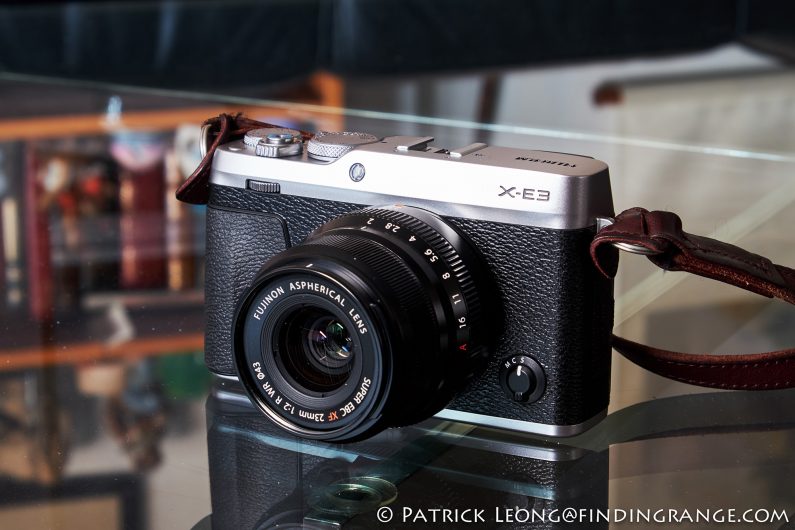
↑ The Fuji X-E3 with the XF 23mm f2.
Since we’re kind of on the topic of appearance, I want to add that I think this is the best looking Fuji out so far. It really looks nice, and better than the pics suggest. Compared to previous generations, the X-E3 has really been cleaned and tidied up. I particularly love the fact that the changes are more evolutionary than revolutionary. The changes make the X-E3 look better but it’s still clearly recognizable as an X-E Series camera. You can still get the camera in either black or silver as well.
But this tidying up goes further than just appearance. One of the reasons why I am such a fan of the X-E Series bodies is how straightforward everything is in terms of the controls and functions. In this way, I really feel that the X-E Series cameras follow rangefinder ideology in that the bodies concentrate on the essentials of photography. That’s definitely the message Fujifilm is trying to convey here, and it’s what I’m feeling. One could even argue this minimalistic approach is more apparent in the case of the Fuji X-E3. All of the most important controls are at your fingertips. Like previous generations, you still have the aperture and focus ring on the lens. There’s still the shutter speed dial, and the exposure compensation dial on the top plate of the camera although there is a new auto mode switch as well. The shutter speed on the X-E3 goes up to 1/4000s but if you use the electronic shutter, it will reach 1/32,000s. The exposure compensation dial allows for ±3 compensation with also a C setting that allows up to ±5 stops. But if you look a little closer, we have significant changes that further streamline the operations of this camera.
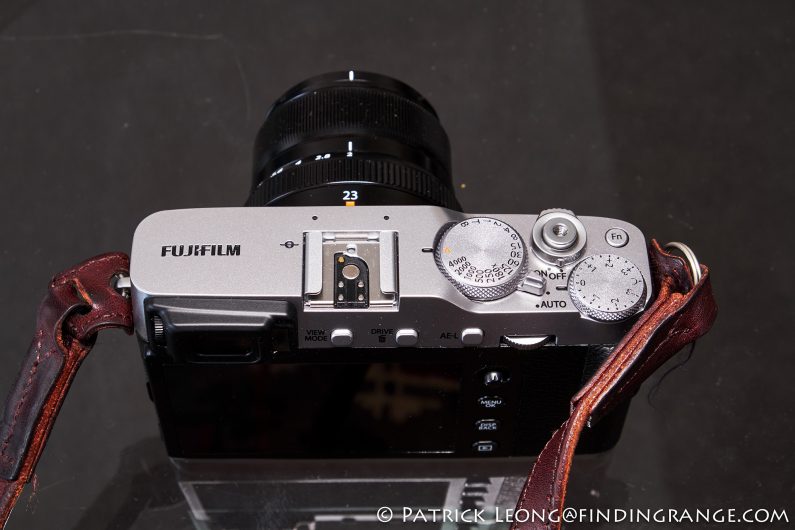
↑ Top plate of the X-E3.
For instance, take a look at the back of the X-E3 for a moment. If you think the back looks less cluttered, you are correct because Fuji have removed the 4 way direction buttons found on not only the X-E3’s predecessors but also on other X Series cameras. The thinking behind this is keeping things simple, and to only the essentials. We’re basically removing buttons that can get in the way, and complicate things. Personally, I love this idea, and I hope they implement this in future Fuji bodies. My Leica SL does not have these direction buttons either, and I don’t miss them. Now, when I rest my palm on this area, I don’t have to worry about pressing any buttons by accident. Furthermore, the LCD display has shifted to the left, and all the buttons that were found on the left side of the screen on the X-E2S are now on the right. Fuji did this with the X100F, and why is this significant? Well, now you can carry all major operations while holding the camera in just one hand. All those buttons can now be easily manipulated with your right thumb.
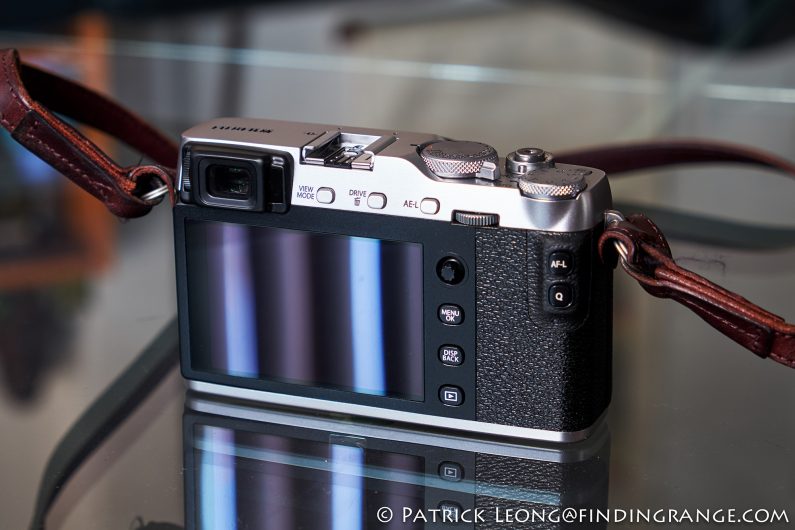
↑ The back of the X-E3. Notice that the direction buttons are gone.
In terms of size, the new X-E3 is also currently the most compact, and lightest interchangeable camera with a viewfinder in the X Series system. With battery and memory card, it weighs just 337 g. This is such a great camera to use everyday for street photography or travel. You can literally throw this in your work satchel or something, and it really won’t make a difference in weight. I particularly love the fact that Fuji have not only included the traditional X-E3 with XF 18-55mm kit but now, they also have an X-E3 with a XF 23mm f2 kit as well. The XF 23mm f2 is perfect for the X-E3. Getting back on topic, while I was reviewing the X-E3, I was carrying multiple lenses, and not once did I feel like it was a burden. I wasn’t carrying particularly small lenses either. For most of the time, my bag basically consisted of the Zeiss Touit 12mm f2.8 which has always been one of my favorites, the XF 23mm f2, and the XF 56mm f1.2 APD.
The only slight downside (if that is even the right word) to having such a compact camera is when you’re using larger lenses like the XF 56mm f1.2 for example. Larger lenses just feel better on a body like the X-T2. That’s how I feel at least. The X-T2 is a little bit bigger, heavier, and it just has more support overall for larger lenses. Nevertheless, it is still perfectly fine to use larger lenses with the X-E3, and I had no problem doing so while I had the X-E3 here for review. If anything, they do make the Fuji MHG-XE3 Metal Hand Grip if you need a little more support.
Overall, the build quality, and ergonomics are really on point here, and I love how the X-E Series just gets better and better with each iteration; however, I did have a few issues I wanted to discuss. For one, I found myself accidentally pressing the Q button more than I expected. I never had this issue with my X-E1 or X-E2. The Q button on the X-E3 is slightly lighter to the touch. I also found the scroll wheel on the back to be a little too sensitive. I would change ISO while I’m on the street, and there were times when I was scrolling through the ISO range, and the scroll wheel would press down accidentally kicking me out of the menu.
There is another issue I’d like to discuss but depending on how you shoot, it may not really be a problem. The X-E3 does not have a pop up flash like its predecessors. This may inconvenience some but it does come with a pocket size flash, which you can attach to the hot shoe.
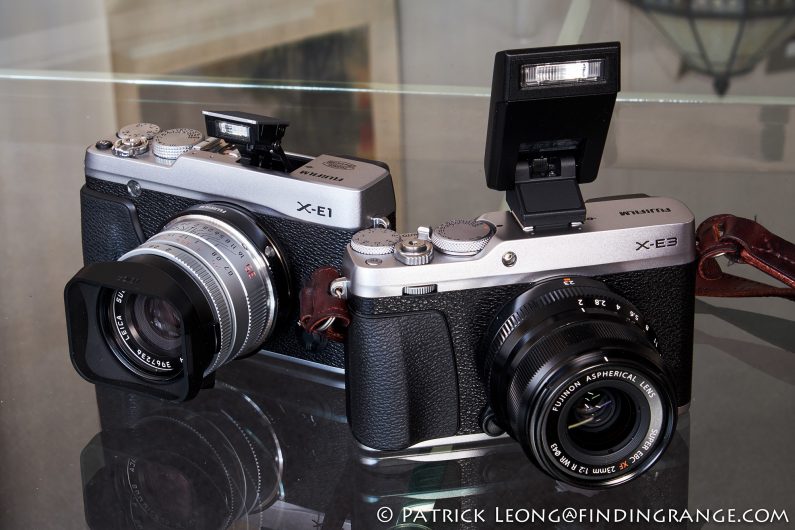
↑ Unlike the X-E1, the X-E3 does not have a pop up flash but it does come with a compact one that you can attach to the hot shoe.
Also, I would love to see a dedicated ISO dial for this camera. I realize that they may not be able to fit something like the X-T2’s but I would love to see something like the X-Pro2’s. I don’t use auto ISO, and I definitely missed how quick it can be to change ISO on my X-T2. Besides, I think an ISO dial would really further enhance its retro theme :).
Other than those issues though, there really is a lot to love here. What I particularly love about the Fuji X-E3 is that at least to me, it actually feels the most rangefinder-like out of all the X Series bodies. I know many of you will be thinking the X-Pro2, and yes, there is no disputing that it is also a very rangefinder-like camera. It has excellent features, and a superb hybrid viewfinder. But the X-E3 has that simplicity going for it…it has that directness, and minimalism that is definitely a trait found in rangefinders. It also has the compact size going for it, and yes, I definitely think there is a noticeable size difference between the X-E3 and X-Pro2. The size makes it feel more rangefinder-like. It actually does feel similar in my hands to my Leica M bodies minus the weight.
Fujifilm X-E3 Mirrorless Camera Features:
Now, let’s talk about the main features. Two features that I think are significant are the focus lever and the touch screen display. Let’s talk about the focus lever first. It is a popular feature on other X Series bodies like the X-T2 and X-Pro2. I definitely love it, and I find it extremely useful. It’s a welcomed addition to the Fuji X-E3, and it allows you to move around the focus area with ease. You can also use it to control menu functions.
The 3.0-inch 1040K-dot touch screen color LCD monitor is a new addition to the X-E family as well. You can tap the screen, focus, and shoot. You also have the drag, double tap, swipe, pinch-in, and pinch-out abilities when playing back photos for instance. These are pretty common functions in general. You can also assign functions to following flick gestures. The LCD overall fits nice, and flush in the camera but I actually don’t really care too much about touch screens. Sorry, it’s just not my thing. It took me ages to switch to an iPhone :). I had the touch screen turned off most of the time while I was shooting with the X-E3. What I would’ve like to see more is a tilting display here. If it was even a year ago, I wouldn’t mind so much but I got used to the tilt display on my X-T2, and I did miss it at times while shooting with the X-E3. It’s not something major but there are times when I really like to shoot at a low angle, and a tilt display is great for that.
There are also a lot of other features that are definitely noteworthy. Like its predecessor, the Fuji X-E3 has a 2.36 million-dot OLED electronic viewfinder. The X-E3’s EVF has a 0.62x magnification, which is smaller than the X-T2’s 0.77x magnification, so at least for me, it took me a bit to get used to the X-E3’s smaller magnification but I still found it to be decent. Looking through the EVF also gave me a nice and clear picture. Furthermore, the EVF boasts a display time lag of just 0.005 seconds.
At this point, I am pretty much sold on EVFs. If you’re a fan of optical viewfinders, I am not disputing their significance or anything but we all have different preferences, and we’re all going to favor different things. For me though, both my main digital setups (X-T2 and Leica SL) only have EVFs. The one on my SL is incredible, and it’s good enough that at this point, I have no desire to ever go back to an optical viewfinder. The one in the X-E3 is also good enough that at this point, I don’t miss an OVF. I love that you can see the shooting effects like exposure settings and film simulations. Normally, I usually leave my cameras’ jpeg modes in default because I only use the RAW files. So, in the case of the X-E3, it would be set on Provia mode but I decided to try the Acros film simulation (which is a black and white setting) for fun on a few days, and I think it is so cool that the image coming through the EVF is actually in black and white. For me, this is a significant benefit of an EVF. I also like being able to review my images through the electronic viewfinder, and actually prefer it over the LCD display for this purpose. I see more detail, especially when I’m out in broad daylight.
Another feature that the Fuji X-E3 has in its arsenal is, of course, wireless connection. What camera these days doesn’t, right? But it’s a little different with the X-E3. It is the first X Series camera with Bluetooth. You can transfer images between your camera, and smartphone or tablet. You can do remote shooting, which I sometimes do when I’m out at night, and view images stored in the camera. You can also send images to an Instax SHARE Printer allowing you to print images on the fly. People really get a kick out of this in particular, especially when I’m out taking portraits.
The Fuji X-E3 also does video, which some of you may enjoy. I’m still a photo only kind of guy :). The X-E3 can record in both 4K at 30 fps, and full HD while also using the Film Simulation modes, which I’ll discuss more further down below. You can also use an external monitor, via the HDMI port, and input audio from an external microphone.
Fujifilm X-E3 Autofocus And Performance Capabilities:
Like other X Series cameras, the X-E3 has a 325 point phase detection autofocus system. It also employs a new AF algorithm that helps it track moving subjects better. In fact, Fuji claims it is twice as fast as previous models, and it’s able to track moving subjects of half the size as before. The X-E3 also offers Single Point AF, Zone AF, and Wide/Tracking AF. There is Face/Eye Detection as well.
In actual use, the Fuji X-E3 focuses quite fast. It’s also accurate even in dimly lit situations. Of course, the autofocus capabilities also depend on your lens choice but I did try a variety of lenses with the X-E3, and I was very happy with the results. While it may not be the fastest in the world, it was plenty fast, and never left me wanting for more. The autofocus was once the Achilles’ Heel of the Fuji X Series but that has clearly changed over the years. There’s no drama here, and it’s good enough that at this point, I don’t even think about it while I’m shooting.
If you prefer focusing manually or you’re using manual focus lenses, there are a host of focusing aids that will make focusing a lot easier. For instance there is digital split image, where the goal is to line up the center patch in the viewfinder. Then there is also my favorite, which is focus peaking. The X-E3 heightens high contrast outlines as you approach correct focus. You can choose the color of the peaking, and its intensity.
Also, if you’re doing continuous shooting, expect up to 8 fps with the mechanical shutter. In my opinion, this is plenty fast for a variety of subjects. In this setting, you can shoot up to 62 lossless compression jpegs, and 25 uncompressed RAW files. If you do need a little more, switch to the electronic shutter, and you can shoot up to 14 fps. You’ll be able to pull off 35 lossless compression jpegs, and 22 uncompressed RAW files.
Fujifilm X-E3 Image Quality:
In terms of image quality, the Fuji X-E3 is similar to other X Series cameras in that it simply rocks! With a 24.3 megapixel APS-C X-Trans CMOS III sensor, and X Processor Pro image processing engine, you’re getting truly first-rate image quality. The IQ is actually one of the main reasons why I’ve been using X Series cameras since the first X100. I love what these Fuji cameras produce. With the X-E3, you’re getting a lot of detail in the photos, and of course that beautiful Fuji color rendering. It’s worth noting that the dynamic range is excellent as well, so the files are quite flexible in post processing.

↑ This is somewhere around midtown taken with the Zeiss Touit 12mm 200 ISO.
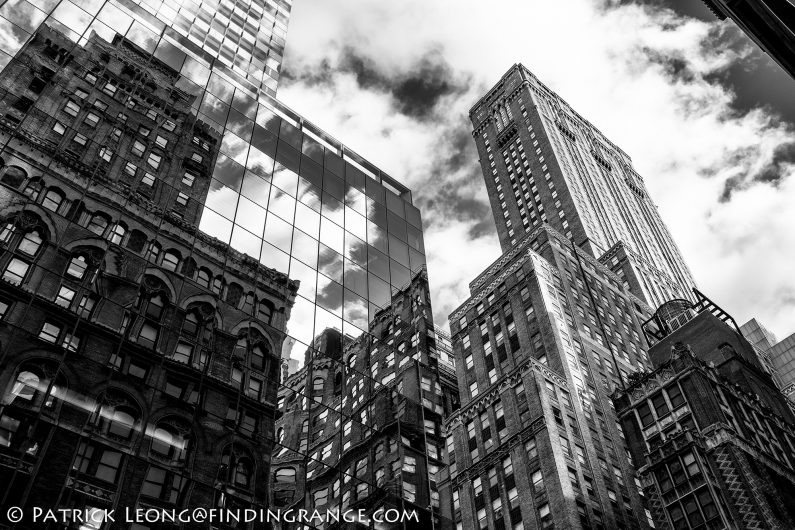
↑ Here’s another one taken with the Zeiss Touit 12mm. 200 ISO.
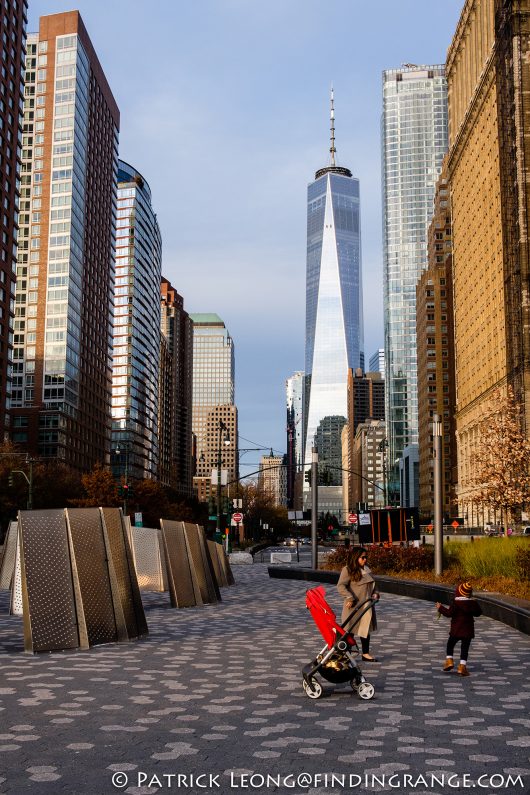
↑ I took this with the XF 23mm f2 at 800 ISO. This is a great lens for the X-E3, and you can buy it in a kit with the camera. However, I’m a 50mm guy, so I’d prefer the XF 35mm f2.
But the camera itself is just one part of the puzzle. The X Series lens collection definitely deserves half the credit here, and with the X-E3, you are opening the door to them. The lenses are true gems in my book. In fact, I’ve reviewed nearly all the lenses, and there really isn’t a bad one out of the bunch. We all have different preferences and requirements but in my opinion, you really can’t go wrong with any them.

↑ Here’s one with the Zeiss Touit 12mm again at 2500 ISO.
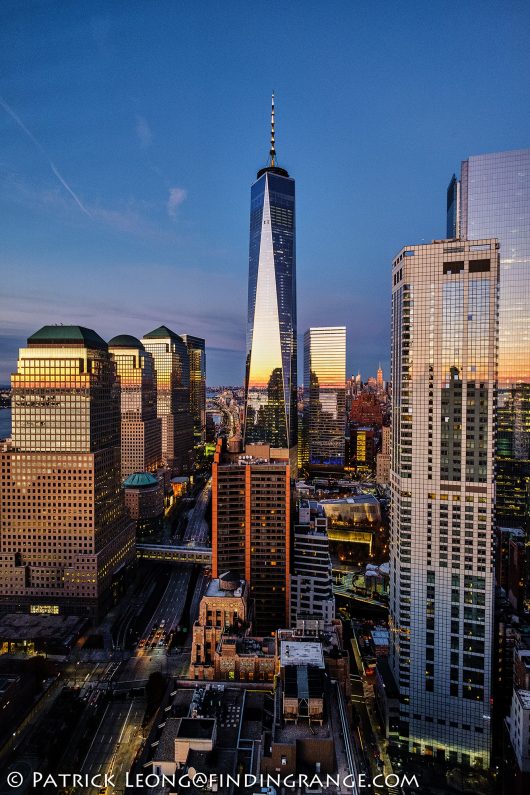
↑ What a view :). This was shot through a glass window with the Touit 12mm again at 1600 ISO.

↑ Here’s one taken with the XF 18-55mm at 200 ISO.

↑ I took this with the XF 18-55mm at 1250 ISO.
Now, the beauty is you’re still going to get excellent image quality in the higher ISO range as well. You will see a little noise at 3200 ISO but I have absolutely no issues shooting at this speed, and I do it often. In fact, I regularly shoot at 6400 ISO at times because the files are totally usable. Noise does steadily increase at 12,800 ISO but in many instances, the files are definitely usable, especially if there is a little post processing involved. Once you get to 25,600 and 51,200 ISO, there is considerable desaturation, and noise. Therefore, I would only use these settings when I really have no other choice.
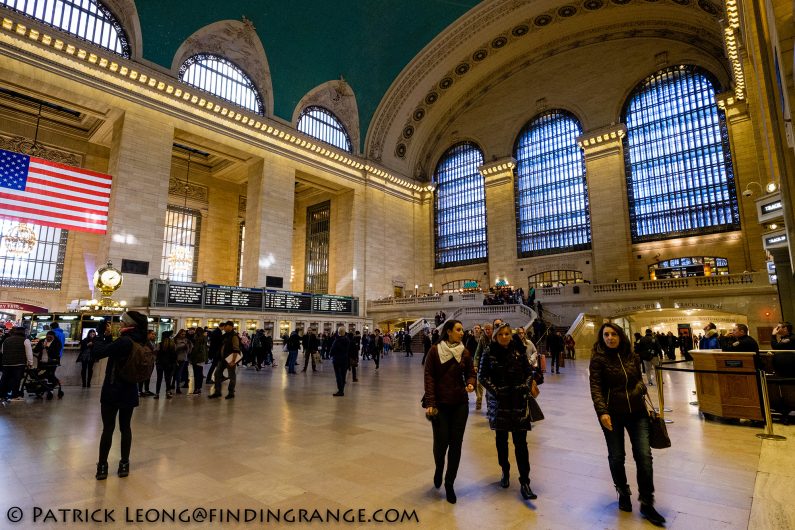
↑ This was taken with the Touit 12mm. I had the camera pushed up to 3200 ISO.

↑ Here’s a 100% crop of the photo above.
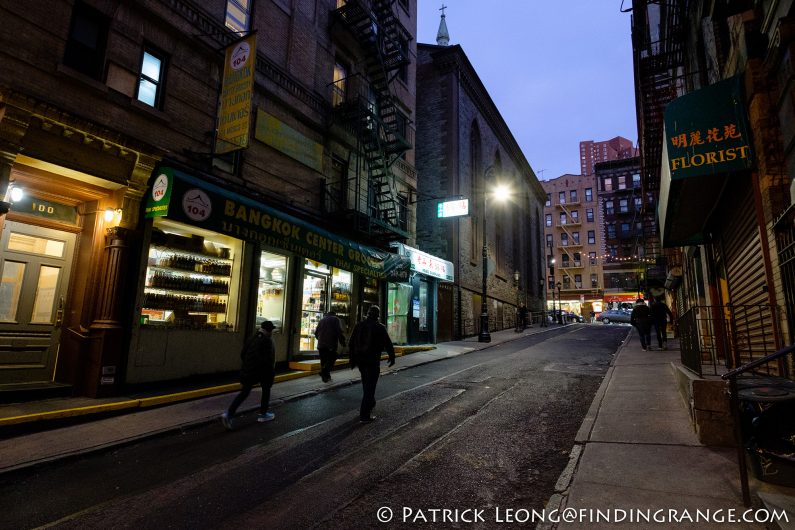
↑ Here’s one taken at 6400 ISO. Again, I had the Zeiss Touit attached.

↑ Here’s a 100% crop of the photo above.
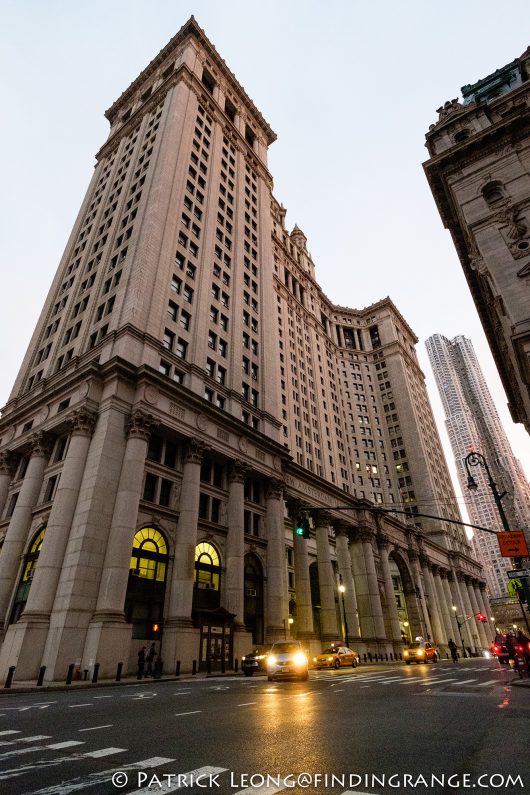
↑ This was taken with the Zeiss again, and I used 12,800 ISO.
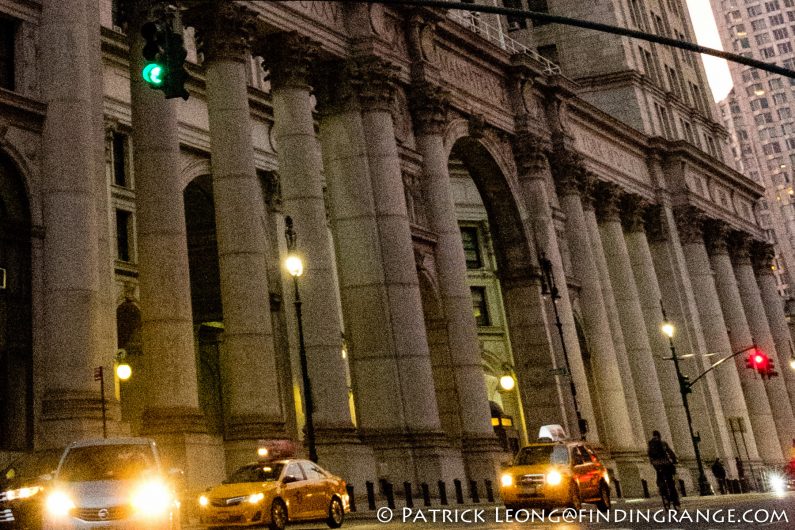
↑ Here’s a 100% crop of the photo above.

↑ Here’s one taken at 25,600 ISO. I used the XF 23mm f2 for this shot.
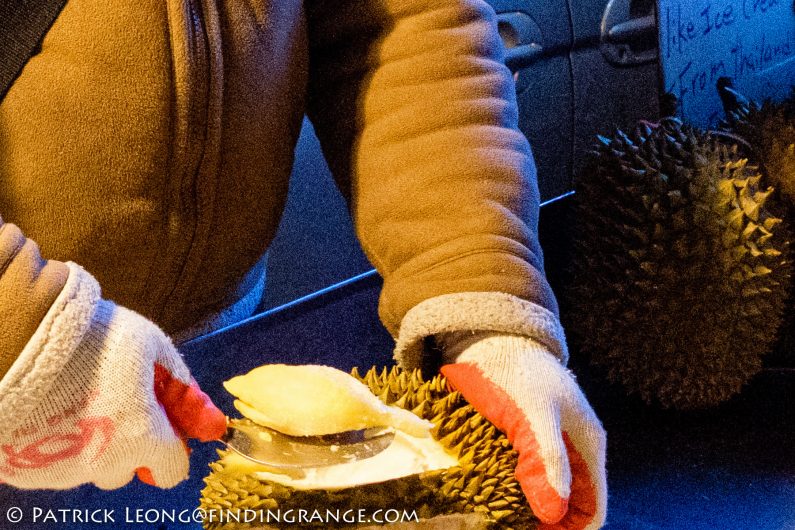
↑ Here’s a 100% crop of the photo above.

↑ This was taken with the XF 23mm f2 at 51,200 ISO.
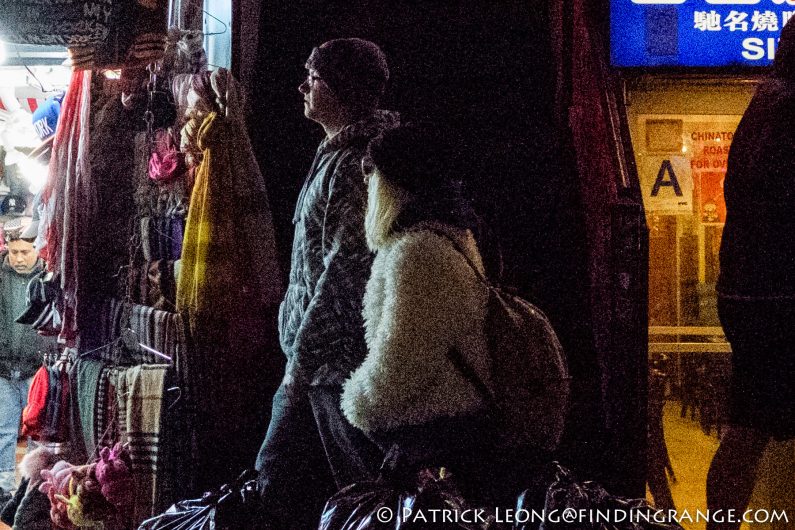
↑ Here’s a 100% crop of the photo above.

↑ Here’s another example of a photo taken at 51,200 ISO with the XF 23mm f2.

↑ Here’s a 100% crop of the photo above.
If you really want full control of the IQ, you’d probably shoot in RAW but for those who don’t feel like processing all those files (there are times I seriously don’t either), I have great news because X Series cameras are known for producing excellent out of camera jpegs. I have a friend that doesn’t even bother with RAW files. He just uses the jpegs. With the Fuji X-E3, you have film simulation modes that mimic film that Fuji makes. Each film simulation has certain characteristics. For instance, the Acros film simulation I mentioned earlier produces black and white files with rich gradation. It is quite nice. Velvia produces vivid colors, and would be great for landscapes. There are a total of 15 different settings to choose from. Here’s the list: Provia/Standard, Velvia/Vivid, Astia/Soft, Acros (+ Ye/R/G FILTER), Classic Chrome, PRO Neg. Hi, PRO Neg. Std, Monochrome (+ Ye/R/G FILTER), and Sepia.
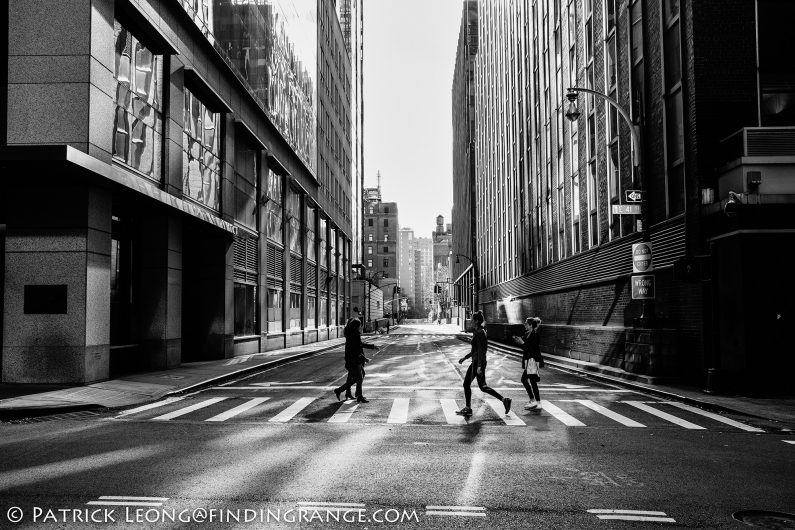
↑ This was taken with the XF 23mm f2 at 400 ISO.

↑ Here’s one taken with one of my favorite lenses, the XF 56mm f1.2 APD. I used 3200 ISO.

↑ Here’s another taken with the XF 56mm f1.2 APD. This time I used 400 ISO.

↑ This was taken with the Zeiss Touit 12mm at 200 ISO.
Fujifilm X-E3 Pros And Cons:
Fujifilm X-E3 Pros:
- Excellent fit and finish.
- Analog controls.
- Minimalistic design concentrating on the essentials of photography.
- A less cluttered layout on the back with better organization than its predecessor.
- Currently the most compact interchangeable lens camera with viewfinder in the X Series.
- New focus lever.
- Touch screen.
- Feels very rangefinder-like.
- Solid EVF.
- Bluetooth connection.
- 4K video.
- Fantastic image quality.
- Buying the X-E3 opens you up to a vast collection of superb lenses.
- Excellent high ISO capabilities.
- Great out of camera jpegs for those who don’t want to bother with RAW conversions.
- I find you’re getting a lot of camera for the price.
Fujifilm X-E3 Cons:
- No weather sealing.
- It’s great to have such a compact, and light camera but depending on your personal preferences, it might not feel quite at home with larger lenses.
- The Q button was a slightly light to the touch.
- The back scroll wheel was a little too sensitive.
- I would love to see a dedicated ISO wheel like the X-T2 or X-Pro2.
- I want a tilt display for this camera.
Fujifilm X-E3 Verdict:
The Fuji X-E3 is a superb camera, and it definitely makes a worthy successor to the X-E2S. Fuji took the X-E chassis, which was already great to begin with, and further refined it to something even better. Build quality and ergonomics are excellent for the most part. There are even a host of new technological features, a large lens collection to choose from, and image quality is outstanding to say the least.
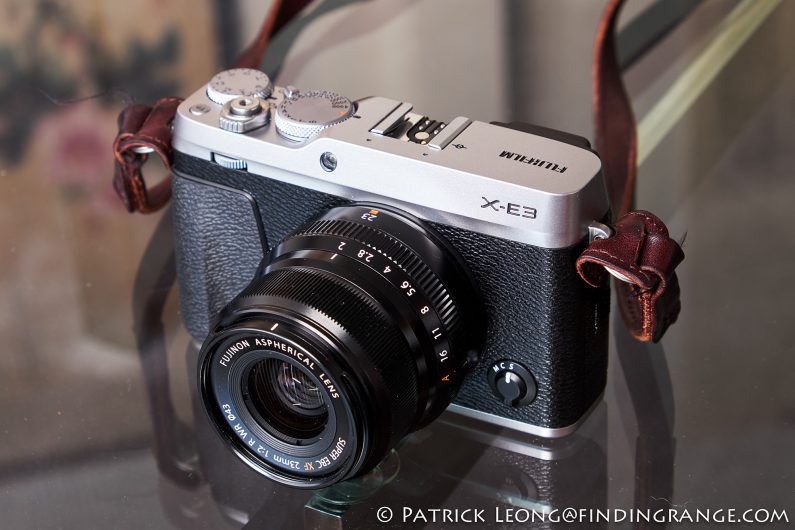
↑ The Fuji X-E3 is compact, light, and produces brilliant images.
But these days the camera market is pretty competitive, and many other brands have similar features. However, what I think separates the Fuji X-E3 from a lot of them is that you still have all these technological advancements, the great lenses to choose from, and superb IQ but you also have a camera with an old school charm. If you’re a person who is looking for a camera where you can actually have the tactile feel of real functional dials, and rings to adjust settings like an older film camera, and not rely on a screen for basic settings or you’re looking for something with rangefinder-like qualities, the X-E3 is definitely something that is up your alley. This is the kind of camera that is all about getting back to the basics. You still have all of the technological wizardry for when you need it but the beauty is, you can push that all to the side, and for the most part, you can just concentrate on taking pics. The X-E3 really gets you involved in the photographic process, and therefore, brings the fun back to photography. That’s something of a rarity these days in my opinion. The best part, and what I particularly find impressive is all of this is wrapped up in a form that Fuji themselves state is currently their most compact interchangeable lens camera with viewfinder. The price is also $899, which I feel is totally reasonable for what you’re getting. While nothing is perfect, the X-E3 comes pretty close in its class if you ask me.
Thanks for taking the time to read my review! If you’re considering purchasing the X-E3, and my review helped you decide, please help support this site by purchasing from any of the links in this review. It will not cost you anything extra. Thank you for your support!
Fuji X-E3 at B&H Photo: Black or Silver

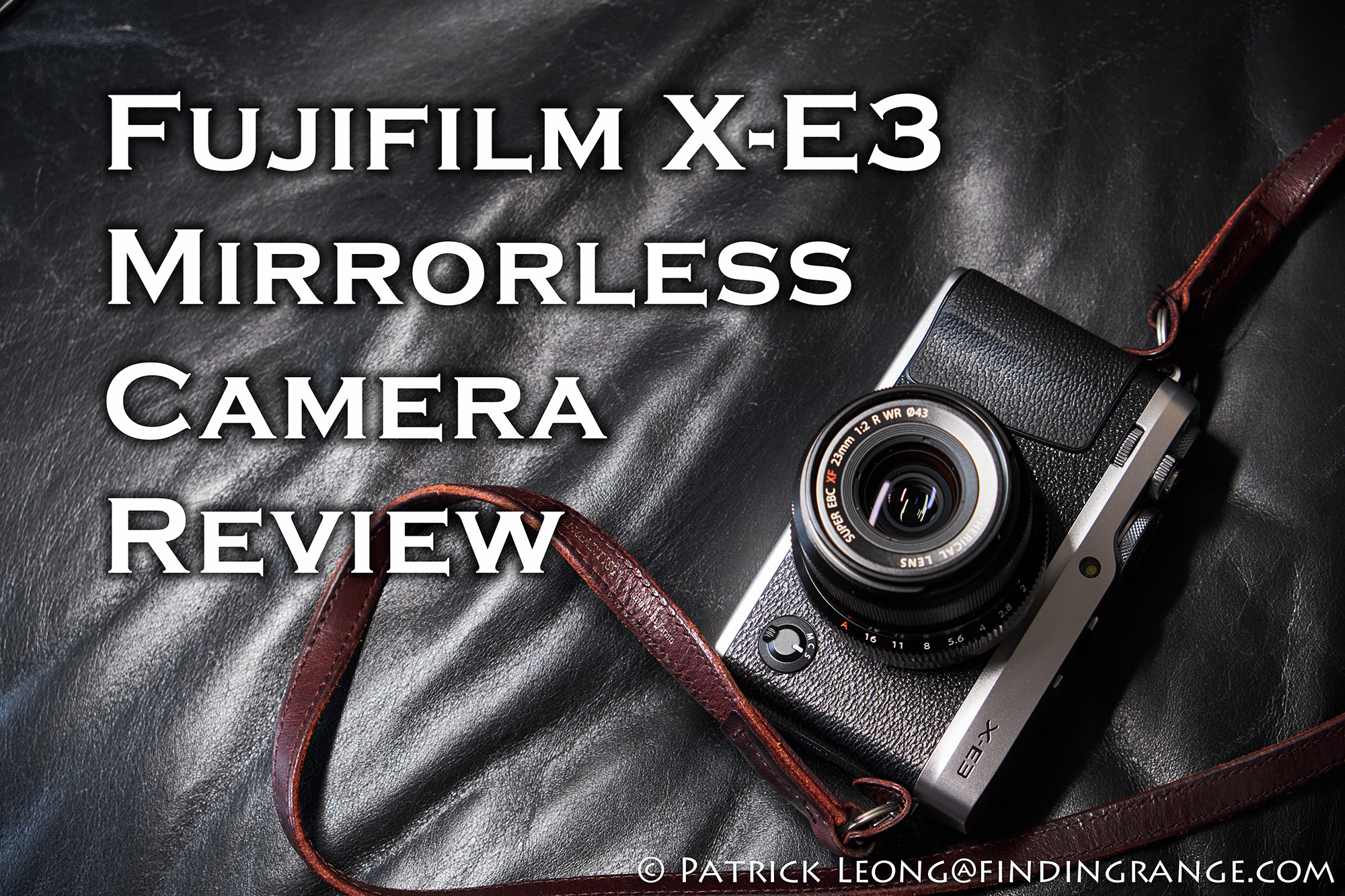
Hi,
Thank you so much for this review, i’m impressed especially about the focus and iso capability. I love my X-E1 and XF35mm1.4 but the autofocus capability is so weak. I don’t know if you tried the hdmi port or not but, is it actually working while shooting and stream the view to the external display? On X-E1, hdmi port only works for viewing the images and videos, i can not use external display for shooting.
Love the whole job you are doing in this blog. Thank you.
Regards,
Hi Fatih,
Thanks for the very kind words, and for taking the time to read my review! The hdmi port is one of the few things I didn’t get a chance to try. My apologies :). But in terms of autofocus and ISO capabilities, this camera is excellent. You can really push the ISO when you have to, and the autofocus is good enough now that I really don’t even think about it anymore. It’s funny you mention the XF 35mm f1.4 and X-E1 because a reader asked me if I would compare autofocus speeds between the two bodies with that lens. The autofocus is noticeably faster; it seems more sure of itself. I hope that helps you if you’re considering an upgrade. Thanks again for stopping by, and I hope to hear from you again!
Best regards,
Patrick
Hi Patrick … Good write-up. Enjoyed reading that. Unfortunately I returned mine as I had also bought A7Riii at the same time and couldn’t justify both. I admit picking A7Riii is not as exciting as xe3 was! The ergonomics are the best with xe3. By the way how do you process Fuji files, is it lightroom? I might have asked you that before.
Thanks Mahesh!
Much appreciate you taking the time to read it! The A7Riii is awesome, my brother in-law bought one. Hope you enjoy it! I’ve actually been switching around from Photoshop CC and Capture One 11. I’ve been using Capture One quite a bit this year, and I really like it but all the photos in this review were processed through Photoshop.
Best,
Patrick
Love the renderings of the photos. The shot of the bridge as background with the 18-55mm has some awesome dynamic range. Nothing was blown out!
Thanks Dane!
Yup, the dynamic range from this camera is good.
Best,
Patrick
Great review, except I disagree with some of the cons. If every lower model had weather sealing, tilt screen, iso dial (and image stabilization) then the camera would be more expensive and cannibalize other models that are selling so well. From Fuji’s point of view they need to have a clear separation between $1000 models and $2000 models.
Hi Shams,
Apologies for getting back to you so late. Thanks for taking the time to read my review! Definitely appreciate you letting us know about your opinions.
Best,
Patrick
Darn good review. Thank you.
Apologies for the late reply, Ralph and thank you very much! Appreciate you taking the time to read it!
Best,
Patrick